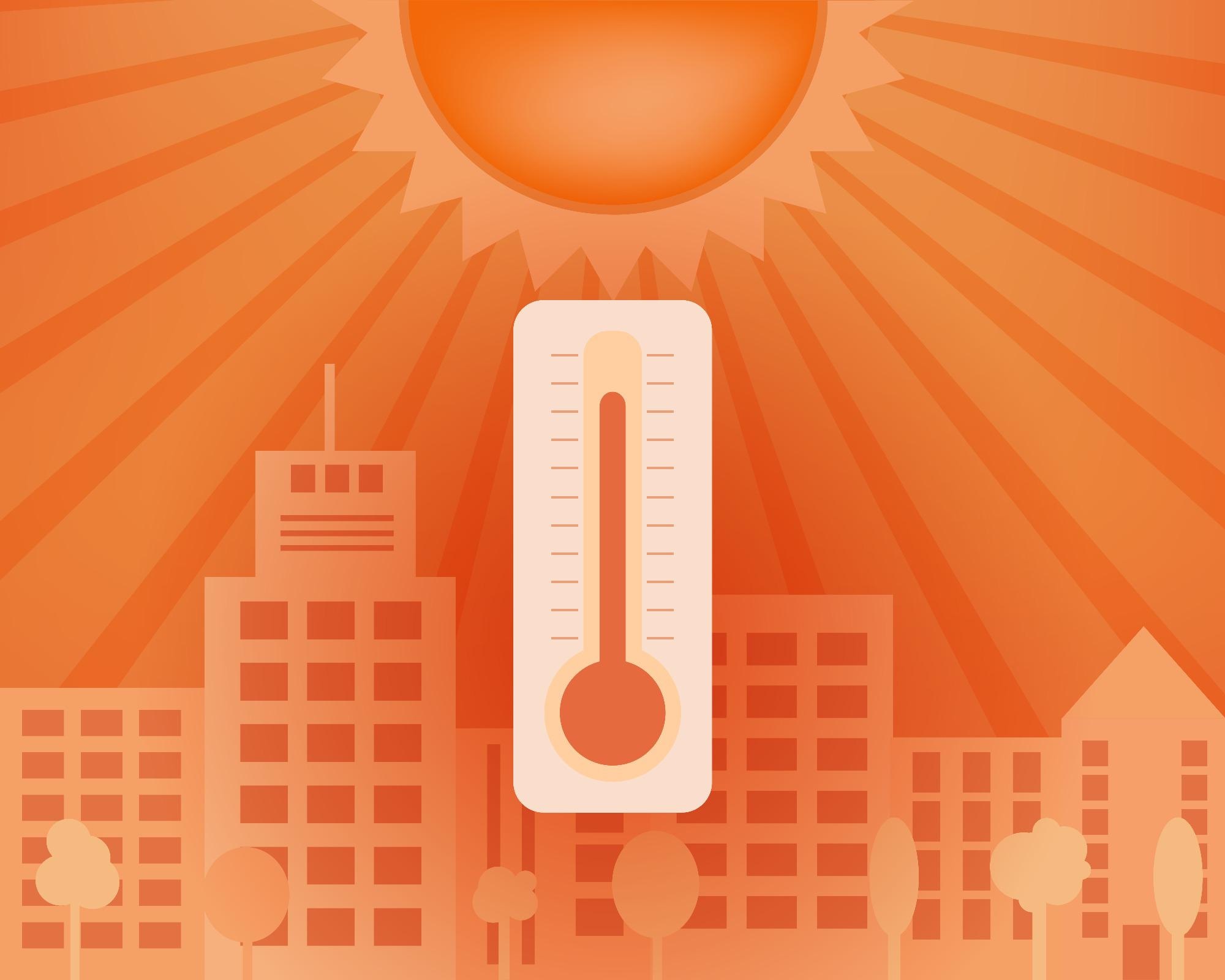The article presents a thorough evaluation of the advantages, uses, and basic principles of passive daytime radiative materials. When contrasted with typical cooling technologies, which use a tremendous amount of energy and have a considerable environmental impact, daytime radiative cooling is developing as a sustainable and ecologically beneficial cooling option.

Image Credit: mocho/Shutterstock.com
Importance of Traditional Cooling Technology and Its Limitations
Owing to various factors such as global warming, growing population, as well as rapid industrialization, cooling has grown increasingly essential to human life throughout the years. A variety of home, industrial, and corporate uses necessitate the use of cooling. Classical cooling necessitates the use of electricity, freshwater, and/or synthesized substances.
Conventional compression-based coolers use a lot of power and leave a significant carbon footprint which poses a serious concern to the environment. Furthermore, the common coolants used in these systems contribute to ozone depletion. As public awareness of energy consumption and environmental issues grows, enhancing the cooling effects of existing technologies and developing novel alternatives becomes increasingly important.
What is Passive Radiative Cooling?
Radiative cooling systems can achieve passive cooling, which transfers surplus energy to outer space via radiant heat due to the vast temperature gradient between Earth (300 K) and outer space (3 K). To accomplish refrigeration without consuming any power, these devices release thermal infrared energy from the surface of the planet through the environment to outer space. Radiative cooling has been used for terrestrial institution refrigeration and water management during the night in subtropics for millennia.
Passive Daytime Radiative Cooling (PDRC) can now be accomplished by projecting radiation from the sun and boosting high-temperature mid-infrared emissivity, thanks to recent advancements in radiative cooling systems.
To minimize heat gains, the PDRC coating demands a significant solar reflectance (Rsolar) in the spectral region (0.3–2.5 m) and a significant thermal emissivity (LWIR) in the environmental long-wave infrared (LWIR) propagation region (8– 13 m). As a result, during the day, the energy loss to frigid space caused by thermal emission via the environmental LWIR barrier is far more than the warming from daylight, resulting in electricity-free spontaneous refrigeration.

Image Credit: titoOnz/Shutterstock.com
Materials Processing for PDRC
PDRC material fabrication necessitates a variety of procedures ranging from E beam vaporization of raw products to simple spray of a liquid solution on a platform. Nanometer-thick surface content necessitates extremely precise machinery and equipment as well as exorbitant prices.
Porous polymers and randomly dispersed microspheres, on the other hand, offer a viable replacement to multilayer material with much the same functionality and are equally simple to construct.
Traditionally, naturally produced resources and polymer blends were the forerunners in passive cooling. Furthermore, for nighttime radiative cooling, several energy-efficient exchangers, such as colored acrylics and multifunctional film-coated cooling systems (e.g., silicon monoxide SiO and silicon nitride Si3N4) have been developed and refined.
However, these radiators with high emissions in the air and/or the full radiation heat spectrum do not have adequate reflectivity for solar irradiance, restricting their applicability during the day.
Recent Applications and Advantages of PDRC
Radiative cooling during the day is a decent choice for mitigating the power crisis, and its use has piqued the curiosity of many in recent times. PDRC has several uses, including space cooling, photovoltaic refrigeration, collecting water from the atmosphere, and power production. Space cooling (such as that used in structures, cargo containers, and automobiles) uses a considerable amount of energy.
For example, the power consumed to power air conditioning units and air conditioners for conditioning account for 10% of total world electricity consumption. Under ideal conditions, PDRC may deliver up to 80% of a domestic building's passive cooling. Passive radiative refrigeration, which cools items without the use of extra energy, can help to develop energy-efficient buildings.
Thermal management is also critical for system efficiency. Higher functioning temperatures, for example, decrease not just the effectiveness but also the longevity of solar power systems. Unlike space cooling, the temperature range of photovoltaic modules is greater than the air temperature; hence, there is no need to block PDRC, which is helpful to photovoltaic thermal transfer. Using radiative cooling layers to gather significant water from the air can eliminate the problem without requiring any additional power.
The dew collecting method radiatively cools a region just below vapor pressure and condenses water vapor from the environment using a supercooled outer space. Owing to the huge volume of water vapor retained in the environment, this passive technology offers considerable possibilities for groundwater collection. The PDRC coating's capacity to proactively keep a surface below air temperature is also beneficial for energy production, which turns the difference in temperature into useable power using a TE generator. In short, it has found applications in vast fields of human life, significantly reducing greenhouse gas emissions.
Prevailing Challenges
Many possible problems must be explored when commercializing PDRC techniques and materials, including environment, pricing, effectiveness, and endurance. Low cost is an essential consideration because it is connected to low-cost materials, widespread accessibility, and production procedures. Using precious metals (Ag or Al) as the sun reflecting coatings, as well as sophisticated production techniques and costly components, would raise the cost.
Polymers have received a lot of attention due to their low cost. However, considerable study is needed to build polymer-based PDRC films for diverse applications, and most PDRC films can increase their cooling capacity by optimization techniques.
Because of the poor conditioning density of PDRC, wide areas are required to provide the cooling capacity, which enhances the price of the PDRC equipment. At the same time, the endurance and consistency of PDRC materials are significant challenges. Furthermore, in practical applications, management of waste, low energy consumption, and structural strength must be addressed.
To conclude, PDRC systems that do not require external power have grown quickly in recent years, gaining significant attention in both research and industry sectors. However, a year-long study should be proceeded to demonstrate material durability, periodicity, and financial viability.
References and Further Reading
Chen, M. et al., 2022. Passive daytime radiative cooling: Fundamentals, material designs, and applications. Eco Mat, 4(1), Available at: https://onlinelibrary.wiley.com/doi/10.1002/eom2.12153
Choo, W. J., Lee, E. J. & Kim, S. K., 2022. Radiative cooling technologies: a platform for passive heat dissipation. Journal of the Korean Physical Society. Available at: https://link.springer.com/article/10.1007/s40042-022-00402-4
Sun, J. et al., 2022. Daytime passive radiative cooling materials based on disordered media: A review. Solar Energy Materials and Solar Cells. 236. 111492. Available at: https://www.sciencedirect.com/science/article/pii/S0927024821005316?via%3Dihub
Disclaimer: The views expressed here are those of the author expressed in their private capacity and do not necessarily represent the views of AZoM.com Limited T/A AZoNetwork the owner and operator of this website. This disclaimer forms part of the Terms and conditions of use of this website.